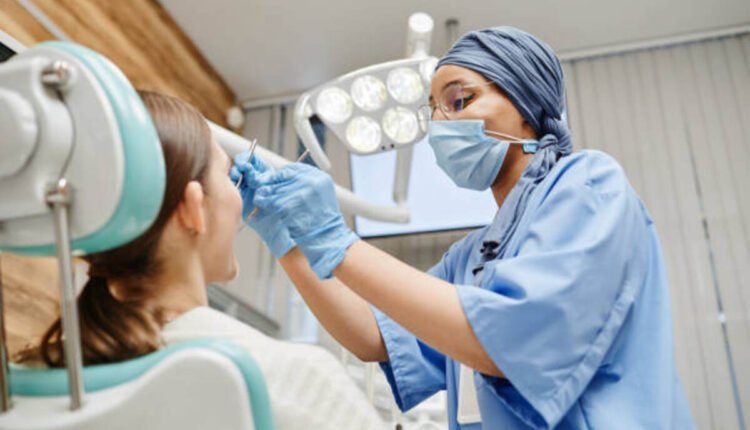Maintaining a clean environment in medical clinics is of the utmost importance, particularly with regard to equipment such as dental handpieces. Steam sterilization offers the most reliable way to ensure these instruments remain hygienic.
Studies have demonstrated the dangers associated with reusing dental handpiece motors without sterilization first, potentially placing patients at risk. To safeguard patient safety, the Centers for Disease Control (CDC) suggests sterilizing these tools using a Class B dental autoclave.
Class B
Maintaining a hygienic environment at a dental office is of the utmost importance, yet it can be time-consuming. Autoclaves come in handy as a tool to sanitize equipment, helping ensure tools are clean and ready for the next patient while protecting patients against infectious diseases.
Selecting an autoclave of class B variety is essential to creating a safe working environment. These sterilizers feature larger chamber capacities than other models, making them suitable for facilities requiring large packs of instruments or bags to sterilize at once. They can also withstand higher temperatures, making them ideal for various applications.
The initial steps of steam sterilization require the dental autoclave to pump out all the air from its chamber to create a vacuum, as any excess air could interfere with sterilization. Once all air has been evacuated from its chamber, the autoclave will begin producing steam for sterilization purposes.
Celitron’s Azteca AC medium steam sterilizer offers high-performance dental autoclaving. With a cylindrical chamber designed specifically for dental clinics and easy-maintenance features, this model makes an excellent addition to a small dental practice while costing less to operate than its competitors.
Class N
An effective dental autoclave is critical to providing patients with a clean environment and protecting against infection. Modern autoclaves use dry heat instead of liquid steam sterilization to speed up and minimize damage; this is especially essential in practices with numerous clients and instruments; whether you require imperative steam or complex programmable models, there will surely be an autoclave model to suit your needs.
Steam sterilization begins by clearing air out of the chamber with a vacuum pump to avoid moisture build-up and ensure steam can reach all parts of the tools in equal proportions. After which, hot vapor forms before dissipating to reveal a sterile instrument ready for use.
Class N and class S autoclaves are among the easiest on the market but don’t expect them to meet all your sterilization needs. Their compact steam chamber can remove air but cannot effectively treat porous textile materials or bagged instruments.
For complex sterilization needs, the Melag Class B Rapid Autoclave may be ideal. This intelligent system was designed to optimize resources while reducing waste, fitting an array of sizes into its sterilization chamber. Furthermore, its fast cycle time ensures sterilization can take place within half an hour.
Class S
Sterilization is an integral part of medical clinic workflow, and selecting an autoclave that kills bacteria, spores, and microorganisms present on staff tools is key to proper sterilization. Benco offers an impressive selection of dental autoclaves in its showrooms; an assistant will gladly show you how each works.
Class B dental autoclaves use an effective vacuum pump to remove all air from their chambers, ensuring steam can reach all parts of the equipment being sterilized. This type of autoclave can accommodate all forms of packaged and unpacked instruments as well as porous items; furthermore, its cycle times are much faster compared to other autoclaves.
When selecting a dental autoclave, make sure it is made from high-grade materials. A durable autoclave will last longer and operate correctly, while one backed by a solid warranty and technical service should also be prioritized. One such fully automatic steam autoclave that stands out is the Tuttnauer EZ9 steam autoclave due to its quick cycle times; sterilizing, exhausting, and drying are done automatically with just the touch of a button as well as preloaded cycles for wrapped/packed instruments as well as touch LED display of cycle data display features make this autoclave an excellent option for dental professionals looking for easy cycle times – like Tuttnauer’s fully automatic autoclave selection process makes life easy when choosing dental autoclave.
Cost
Dental offices need top-of-the-line tools and sterilization equipment in order to operate effectively. Autoclaves are among the most commonly used sterilizers, providing safe environments for patients. Their cost depends on factors like chamber capacity and other features – you must select an autoclave that meets all of your practice’s needs while remaining reliable over time.
As the first step in purchasing an autoclave, it is important to assess the available space. A larger chamber will enable you to sterilize more items at once while saving on energy costs. Furthermore, selecting a portable model with handles makes moving it even simpler.
Step two is choosing an autoclave type. There are two primary options available: automatic or manual machines. Automatic machines require less attention from an attendant, enhancing productivity. Manual machines offer more access for chairside work, increasing productivity. A specialty autoclave may include pre-vacuum phases that help disinfect porous instruments more thoroughly. Selecting the ideal autoclave will save your office time and money while simultaneously guaranteeing your dental instruments remain free from dirt, organic tissue, or blood particles.


